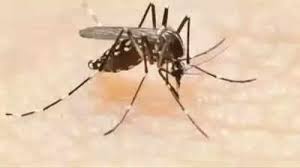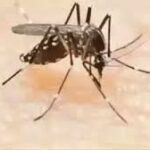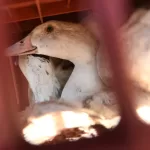Mosquitoes and viruses may seem like an unlikely pair to some, but the intricate relationship between them reveals why certain viruses spread through mosquito bites—and why they don’t always thrive in humans. In this article, virologists and entomologists break down the complex battle between arboviruses, mosquitoes, and human hosts.
Humans possess remarkable immune systems capable of fighting off most infections, and our bodies are not the ideal environments for viruses to replicate. However, mosquitoes offer a perfect breeding ground for many viruses. These viruses, known as arboviruses, are typically transmitted from insects to humans and are often adapted to survive within the insect host.
The Mosquito’s Role: A Perfect Host for Viruses
Arboviruses face a difficult task when trying to make the jump from mosquitoes to humans. Once an infected mosquito bites an animal host—such as a bird—the virus is ingested and enters the mosquito’s midgut, which acts like the stomach in humans. The virus is able to replicate here undetected by the mosquito’s immune system, a feature that allows it to persist without harming the insect.
The virus then migrates to the mosquito’s salivary glands, preparing to be transmitted when the mosquito bites again. Throughout this process, mosquitoes can also change their behavior to increase the likelihood of infection—feeding more frequently or becoming more attracted to infected hosts.
From Mosquitoes to Humans: The Virus’s Struggle to Survive
For the virus to infect humans, it must first overcome several barriers. The initial step occurs when an infected mosquito deposits virus-laden saliva into a human during a bite. From there, the virus must adapt to the human body’s warmer temperature—around 98.6°F (37°C)—and evade the immune system’s defenses. If the virus makes it into the bloodstream, it faces the challenge of being targeted by immune cells that specialize in detecting and attacking foreign invaders.
In cases like the eastern equine encephalitis (EEE) virus, the virus can reach the central nervous system, where it can cause severe inflammation and long-term cognitive effects. The virus also employs various survival strategies, such as mutating its surface to avoid immune detection.
The Transmission Cycle: Why Human-to-Human Spread is Unlikely
Despite the potential for severe effects, the EEE virus does not spread directly from person to person. Once inside a human, the virus’s transmission cycle stalls because it cannot infect new mosquitoes. The virus’s preferred transmission route is between mosquitoes and birds, and human infection is considered an “end of the line” for the virus.
This helps explain why human infections are rare. The virus does not gain much by infecting people, which is why it rarely shifts from its natural insect-host transmission cycle.
Conclusion: Why Mosquitoes Remain the Virus’s Favorite Host
While human infections can occur, they are far less common because viruses like EEE are more adept at using mosquitoes to travel and reproduce. Mosquitoes, evolved over millions of years, offer a much more hospitable environment for viruses compared to the human body.
The continued evolution of both viruses and their insect hosts keeps this cycle going, but humans are not the virus’s preferred destination. By understanding the battle between viruses, mosquitoes, and the human immune system, we gain insight into why certain infections remain contained and why mosquitoes remain the preferred vector for some viruses.
Disclaimer: This article is provided for informational purposes only and is not intended as medical advice. Always consult a healthcare professional for concerns regarding diseases transmitted by mosquitoes.
Source: The Conversation











